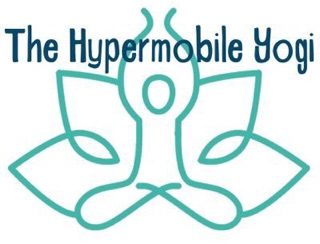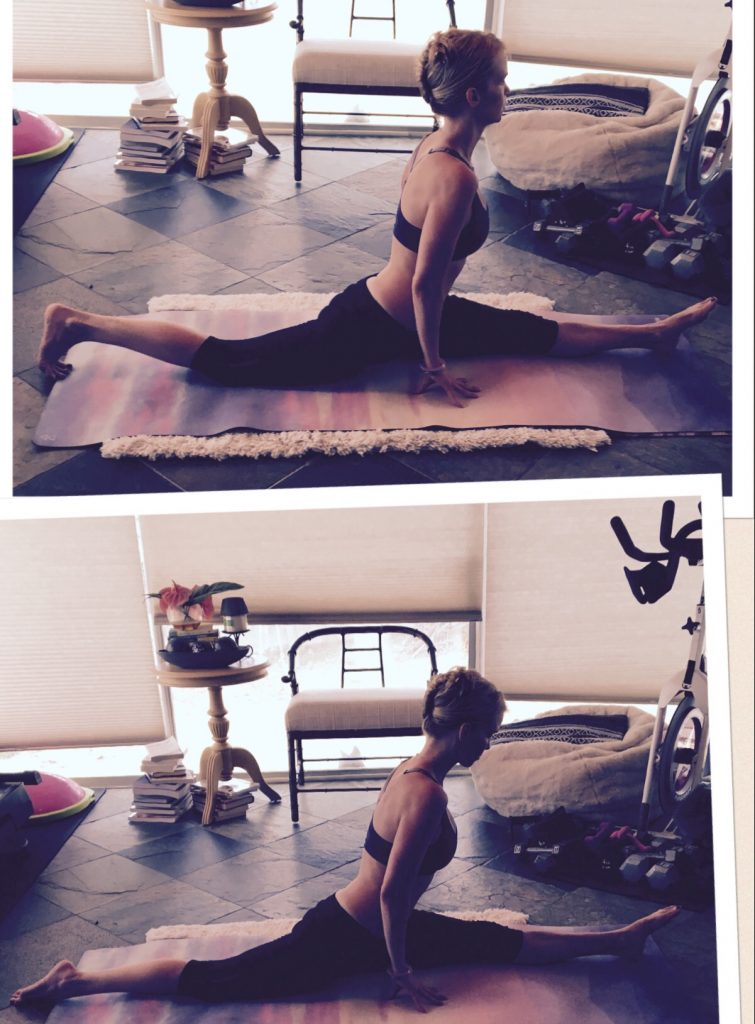Splits – not something I usually do in Yoga, not because they are hard, but because they are way too easy for me.
If you are hypermobile, splits can be super easy and done (or very close) with little effort – that’s not always a good thing. It may seem like a yogi dream, but many of the issues that can or may go along with hypermobility are not so great. Unfortunately, hypermobility has mistakenly been glorified in many sports, including dance, gymnastics, ice skating, and more. Yoga is much the same, but times are changing – thankfully because many of us were told not to do yoga and that yoga is dangerous if you have joint hypermobility, which is often caused by an underlying connective tissue disorder such as Ehlers-Danlos syndrome (EDS). There are several types of EDS, and also several other heritable conditions that affect the connective tissues and cause hypermobility – Marfan Syndrome is one, as is Williams Syndrome, Sticklers Syndrome, and Osteogenesis Imperfecta. There are also several types of hypermobility syndromes.
While I usually avoid the splits, I took an excellent candlelight yoga class the other day and decided to safely (for me) do the splits. One of my biggest fears almost happened when the instructor tried to adjust my foot, making the top of my foot flat on the group. For me to try a split as safe as possible, I have to keep my toes curled under and my feet flexed – i.e., Yoga Toes, but in a position that usually doesn’t call for them. The reason is that the flexion of my foot keeps my muscles engaged in a way that protects my knee cap. If I plant the top of my foot flat, my knee will dislocate, which the instructor wasn’t aware of, nor did she seem aware of hypermobility in general. Hence, why I usually don’t do splits.
There are other yoga positions where I use the same technique to protect my joints, and I use this same method anytime I have to lay on my stomach (but I usually avoid it). If I’m not practicing yoga and have to lay on my stomach for PT or a massage, I always raise my feet on something supportive, or I have this particular way I position my legs that feels somewhat safe to me. I can’t fall asleep, though, or my knee caps will slide out of the socket.
It’s important to mention also that hypermobility and flexibility are not one in the same – despite often being referred to that way. You can be hypermobile without being flexible and vice versa. In fact, my guess is that about 50% of those with joint hypermobility, are not so flexible and are quite stiff – males in particular, but many females can be stiff as well (ie. Can’t do the splits easily).
The common misunderstanding about hypermobility vs. flexibility, what they are and what they are not, can cause many people who are hypermobile to go even longer without a proper diagnosis.
You don’t have to be flexible to be hypermobile. Just look up Musculocontractural Ehlers-Danlos syndrome.


